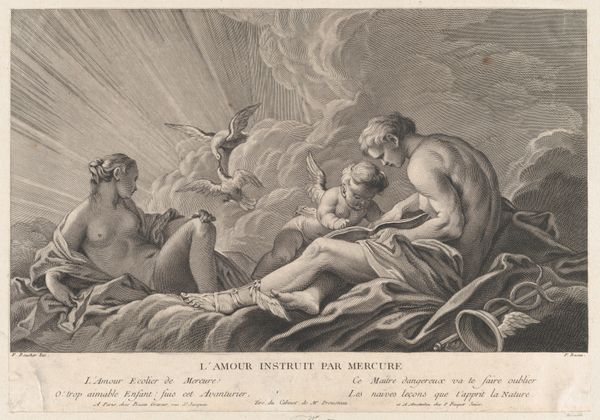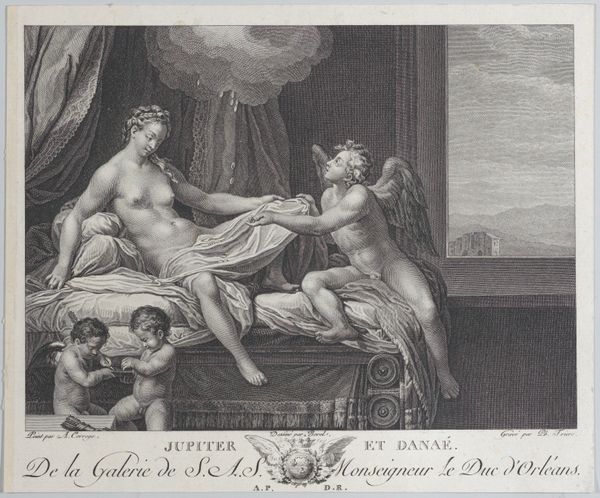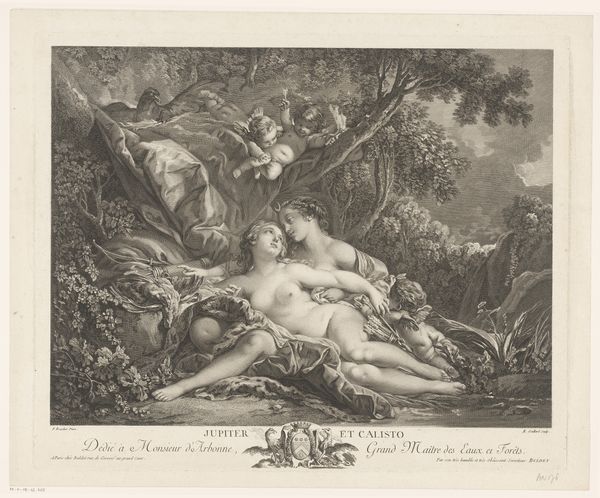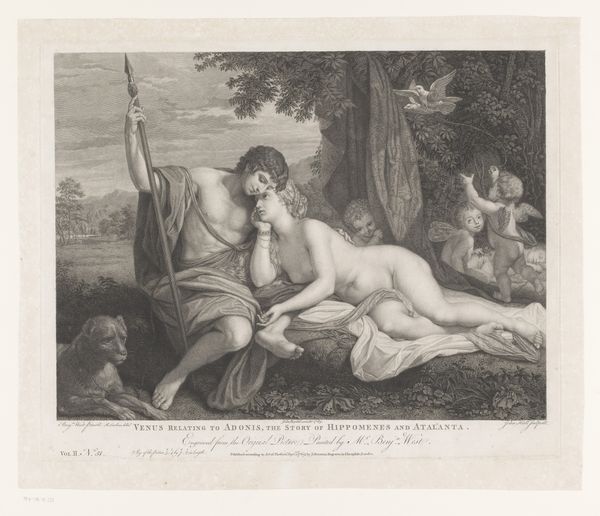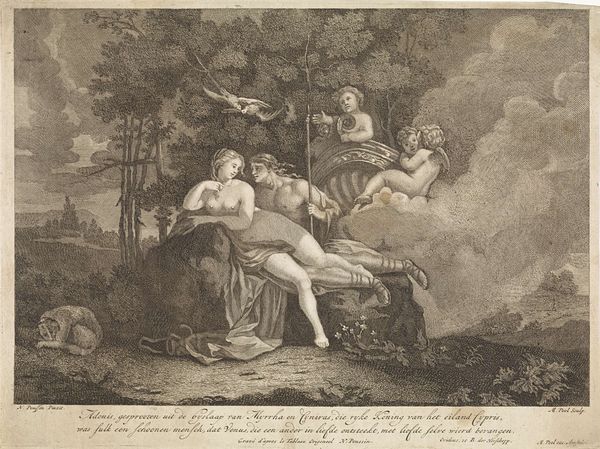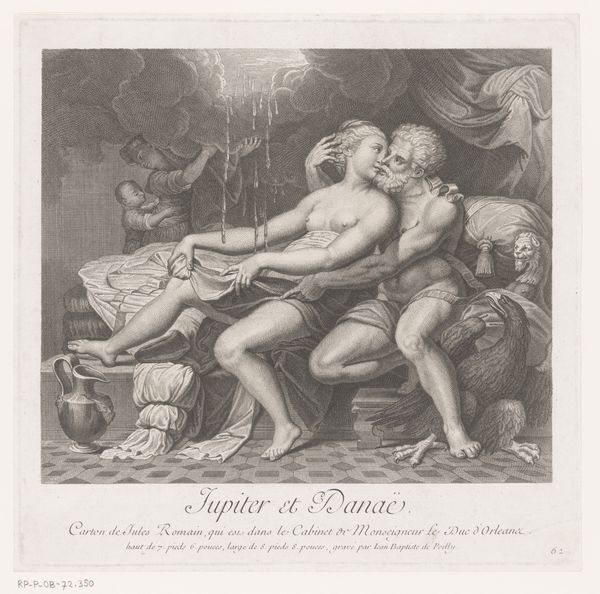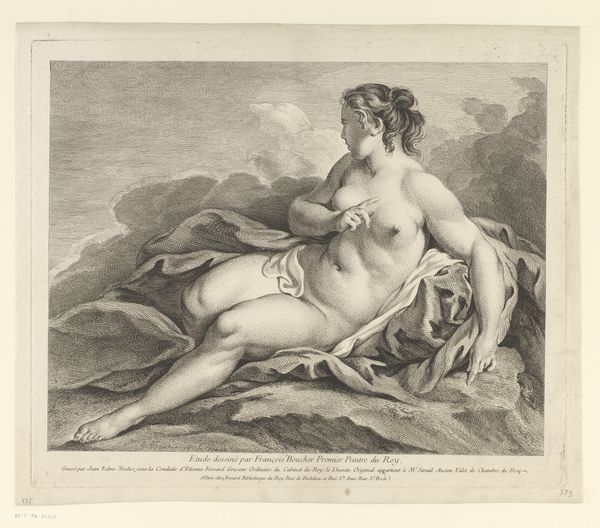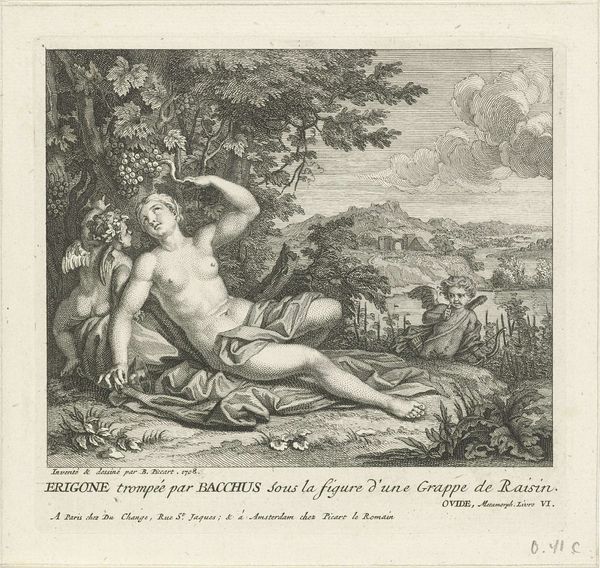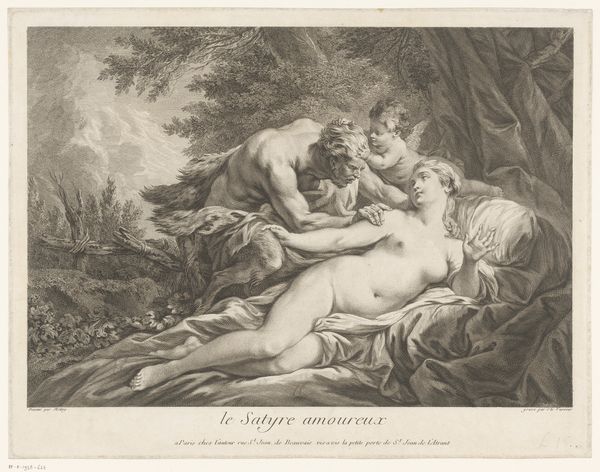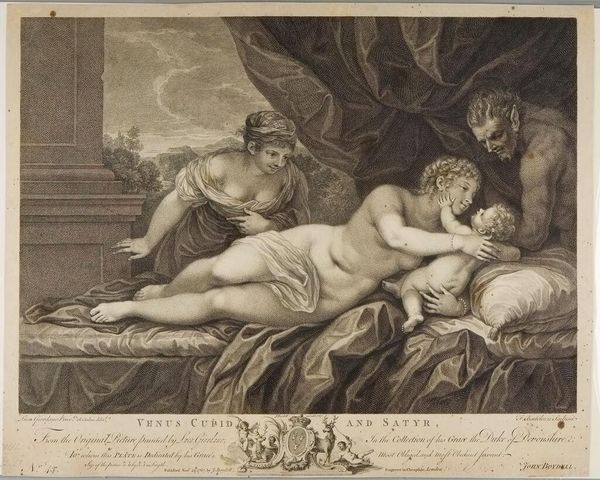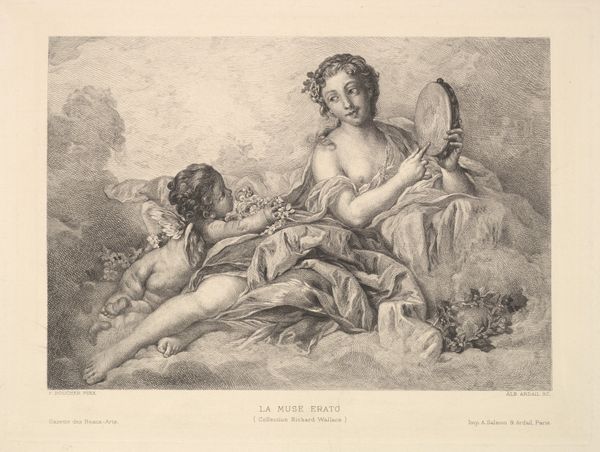
Dimensions: Sheet (trimmed): 10 5/8 × 15 7/16 in. (27 × 39.2 cm)
Copyright: Public Domain
Curator: This engraving, "Venus Giving Nectar to Cupid," dating to the late 18th century, attributed to Pierre François Basan, is striking, isn't it? It beautifully embodies the Rococo style, playing with themes of love, motherhood, and the classical world. Editor: Indeed. My first impression is one of gentle, dreamlike quality. The figures seem to float amongst the clouds, an ethereal composition crafted with incredibly fine lines. There's something almost porcelain about the figures. Curator: That dreaminess, I think, is tied to its allegorical weight. Consider the position of women like Venus, both revered and sexualized, their power and vulnerability always a negotiation within the gaze of the artist and the society they represent. The print makes Venus’ role to protect, encourage and possibly, warn her son, Cupid. Editor: The creation of this image must have relied on mastery over material processes to make all that symbolism palpable. How were engravings like this distributed, and who had access to these prints at the time? Curator: The production of this image using engravings suggests that this was meant for wider circulation beyond elite collectors who purchased paintings. It's likely this print made these themes of mythology accessible to a growing middle class, thus shifting, or reaffirming class ideals in their homes. It acts as both propaganda and decor. Editor: Absolutely. And when we look closer at how this image was made, we realize that the final composition is dependent upon those earlier materials—the inks and papers. But also consider Basan’s workshop, the collective labor it took to get the materials and print to a wide range of consumers… it really pushes this print into its socio-economic role. Curator: Right, and the "nude," so central to this image, carries so much meaning when replicated, redistributed, bought and sold in society. It provokes critical thought about these constructions around ideal bodies. Here is Venus’ nude meant to embody a type, a concept. She represents the ideal of love and motherhood, always constructed in gender and access within society. Editor: What do you mean "access?" Curator: Well, not every woman or body has access to be considered in proximity to "the Venus"—her representation always places certain bodies above, and certain bodies under in relation to an assumed, dominant standard. Editor: It’s true: viewing art as just "beauty" distracts us from the layers of intent, labor, distribution and critique locked within its physical presence. I hadn’t quite noticed all of that just looking at the print on the surface! Curator: And I now have a greater sense of the work required in reproducing this kind of popular beauty back in the late 18th century.
Comments
No comments
Be the first to comment and join the conversation on the ultimate creative platform.
